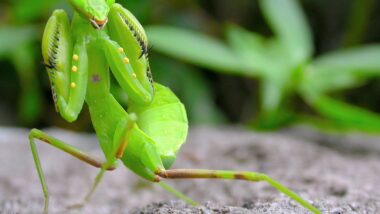
Mantises are fascinating insects that are very unique. They are very hard to spot, but once you do, they are mesmerizing to look at. This is why they are very popular pets. If you are interested, here is this post on how to take care of a praying mantis. For this post, you will learn about them and learn a lot of praying mantis fun facts as well.
What Are Mantises?
Before we start talking about mantises, why do some people call them different names? Some people say mantis while other people say mantid. You may be thinking, what’s the difference? One key difference between the words is simple. Mantis (AKA Mantodea) is the order in which all mantids, including mantids, are in. Mantises are an order that contains 2,400+ species each organized into 420 genera, and organized within 33 families. Mantids (AKA mantidae) are the largest family, which encompasses all the families excluding 14. Among them is the most popular and well-known, the European Mantis. People use the names ‘mantis’ and ‘mantid’ interchangeably, but now you know the difference between the two names. Now you know the basic difference between the two names. If you want to learn more about the name etymology in detail, this article will go further in detail about the topic. For now, you can just use the word ‘mantis’ to play it safe.
Mantis Anatomy

They have triangular heads that are capable of turning 180 degrees. They have two compound eyes as well as two antennae to help them see and sense prey. Their flexible, thin neck enables them to swivel their head around at practically any angle.
Mantis species are all very similar and have the same ‘prayer-like’ pose. They have two long forelegs that fold into a position that makes it look like they’re praying. However, these forelegs are not folded in to engage in thoughtful devotion. Once mantids lock onto their prey, their forelegs spring into action to grab its unaware prey. Their forelegs are tipped with sharp spines that help grasp and crush their prey. Their other 4 legs help them maintain balance when walking, attacking, or climbing.
Tymphanate Hearing
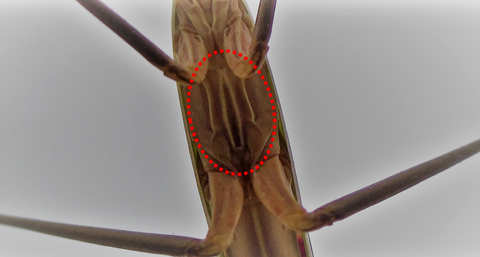
The middle part of the mantis, the thorax, gives them tympanate hearing. Tympanate hearing is a different hearing system than the way we hear. It is an external auditory system (or to simplify it, like an ear) that consists of a membrane capable of vibration known as the tympanum, an air-filled chamber and sensory organs to detect sound. A mantid has two tympana (plural of tympanum) in the middle of its body, inbetween its legs underneath. This helps mantids to hear ultrasound.
Tympanate hearing especially comes in handy when a mantid flies. This helps it to dodge predators in the sky and allows it to make quick maneuvers to avoid them, like swerving and dropping mid-flight. For example, tympanate hearing helps mantids to sense when bats are using echolocation to hunt them down. The bat’s clicks bounce off the mantid’s body, but the mantis takes action by sensing the bat’s location and movements and responding to them accordingly. Most likely by dropping out of the bat’s snatching range. Some mantids can fly, while others can’t. Their wings aren’t just used for flying. They also use their wings as a part of a threat display. They will fan their wings out and outstretch their forelegs to make themselves look bigger and more intimidating to predators. Some species can even release a hissing sound to scare predators off.
Mantises have many abilities and skills that have helped them survive and thrive in a variety of different environments around the world.
Where Do They Live?

Mantises are a very adaptable species. They live on all 7 continents except Australia. They can be found in temperate and tropical climates. Mantises can be found in grasslands, woods, fields, mountains, and even deserts. As long as the environment has plenty of food and places to hide, there is a high likelihood a mantid can survive there.
Mantis Life Cycle
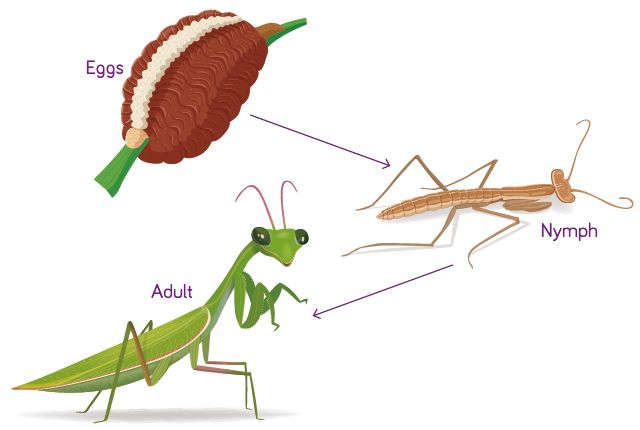
To birth the next generation of mantids, a mantis needs to mate. A female mantis will release pheromones that attract male mantises. Female mantises will often eat a male mantis after, or even before, mating. This will help increase the chance of fertilization since she is getting an ‘energy boost’. Sometimes the female mantid will use her pheromones to attract male mantids just to receive sustenance and not mate with them at all.
A mantis’s average life span is usually 6-12 months but is fraught with peril throughout from conception to old age. A female mantis will lay an ootheca (egg mass) that will take about 3-8 weeks to hatch. Depending on the species, it can hold 10-400 mantid nymphs. A mantid will go through 3 life stages; egg, nymph, and adult.
From Egg To Adult
Once they are ready to hatch, mantises will come out. All of the nymphs won’t hatch at the same time. Oftentimes a bunch will hatch out, then another bunch a few hours, or even days, after. this ensures that if a predator comes, it won’t compromise the whole ootheca. Mantis nymphs will use an egg tooth to break out of the ootheca and disperse quickly to an area far away from their siblings. This is to avoid cannibalism. Mantises are now ready to catch and devour their own prey.
In order to grow, mantis nymphs must molt. This means they shed they must shed their old skin to keep growing. Molting makes the mantis the most vulnerable. Sometimes mantises get stuck in their old molt and this can result in their death or serious disfigurement. They are also unable to react to their surroundings while in the molting process. This process can take hours. Mantises will have to molt every few days when they are young, but then as they get older, the time between molts may be every few weeks. It usually takes 10 molts until a mantid becomes a full adult.
Once a mantis becomes a full adult, they will be able to reproduce. Then the cycle repeats for the next generation. It is a very satisfying experience to be able to observe and watch mantises grow from a little nymph to a grown adult. It almost seems as if each one has a unique personality. Some are more cautious and skittish, while others are more aggressive. This can depend on what species they are as well. I will be happy to showcase my 5 favorite mantid species.
My Top 5 Favorite Praying Mantis Species
European Mantis (mantis religiosa)
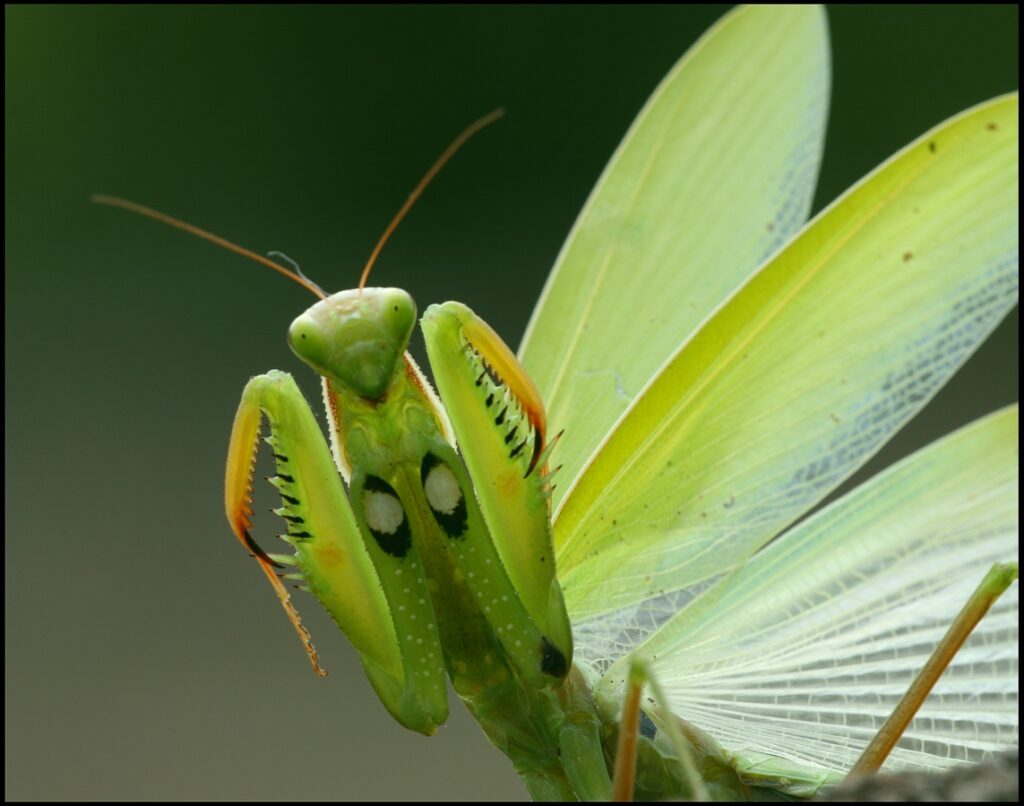
These are the most well-known mantises and what people think of when you say ‘mantis’. They are very excellent beginner pets. they originate from Europe.
Dragon Mantis (Stenophylla Lobivertex)

These are elusive and incredibly hard-to-spot mantises. They live in the tropical regions of South and Central America, this species also finds its home in select areas of Puerto Rico, Florida, and Hawaii. I admire it’s appearance since it’s flat body and shape resembles a dragon. This mantid’s name is cool, as well as the insect itself.
Orchid Mantis (Hymenopus coronatus)

This mantis dwells in the region of Southeast Asia. I love it’s bright, colorful, pinkish hue that allows it to blend in with the orchid flower. It will lie in wait until a pollinating insect gets close within it’s striking range.
Dead Leaf Mantis (Deroplatys lobata)

A Dead Leaf Mantis really looks like a leaf. if you look very closely, its wings look like the veins of a dead plant leaf!
Giant Asian Shield Mantis (Hierodula membranacea)
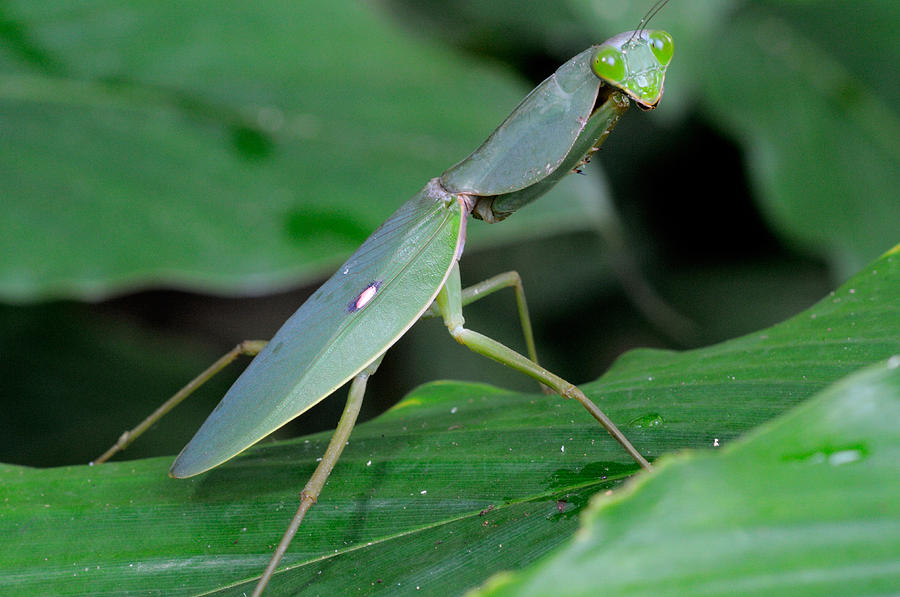
One of the largest mantis species, this mantis lives in parts of southern Asia. It is a great beginner species that can grow up to 5 inches long! That is almost half a foot. As you may notice, a Giant Asian Shield Mantis has elongated shield-like wings, as well as the top side of its thorax.
10 Praying Mantis Fun Facts
1. Mantises can rotate their heads 180 degrees. They also have extremely flexible necks, which also enhance their eyesight and give them a wider field of vision.
2. Some large mantis species are capable of hunting animals larger than insects. For example, mice, lizards, birds, and even baby snakes! Here is this cool video of a mantis hunting a corn snake. Careful, this video is not for the faint of heart, or snake lovers.
3. Some mantis species are even known to hunt for and catch small fish. In this case, the tables are turned!
4. Praying mantises are one of the few insects known to see polarized light. This ability helps them detect water surfaces and navigate through their environment more effectively.
5. Praying Mantises are the only animal in the world that has one ear. They truly are one of a kind!
6. Out of the 2,000 mantis species, only 18 are from the entire North American continent. The rest of the other species are from tropical locations.
7. When it comes to mating, female mantises can be cannibalistic and devour the males. Males may attempt to ‘dance’ in order to woo the female or even present food for the female as a gift.
8. Mantises are often viewed positively by cultures from around the world. In Japan, the praying mantis is a symbol of bravery and samurai warriors, while in Africa, it is often associated with good luck and is believed to bring rain. If you are interested in how mantises are viewed by different cultures, you can read this article that goes more in-depth about it.
9. Mantises are the most closely related to cockroaches and termites. Perhaps this is how some mantis species have developed a resistance to pesticide, much like their cockroach cousins.
10. Male mantises often have longer, more feather-like antennae compared to females. These specialized antennae help them detect pheromones released by females during the mating season.
Conclusion
Thank you for checking out my post and I hope you learned a lot of things about these interesting insects. If you are interested in taking care of them, you can check out this post here to learn more.
